Tiny pieces of plastic may be doing as much harm in our oceans and waterways as the big stuff, finds Nina Notman
Take a walk on a remote beach anywhere in the world and you will be treated to a host of sensory treats: the smell of salty water, the sound of seagulls, the feel of waves lapping at your feet, the sight of discarded plastic items. Sadly, in today’s world you’d struggle to find a beach onto which plastic debris hasn’t washed up. And it is not just the stuff you can easily see that is of concern; much of the plastic polluting our seas, lakes and shorelines is tiny.
Plastics less than 5mm in size are known as microplastics. Some of these enter the sea that size already; for example, microbeads found in cosmetics such as face scrubs and toothpastes, rubber coming off tyres and shoe soles, and microfibres washed from synthetic fabrics. But substantial quantities come from big pieces of plastic – such as carrier bags, drink bottles, food containers and fishing gear – that enter the sea intact and are broken down, both mechanically and with the help of UV light, into tiny chunks. Plastic doesn’t typically biodegrade.
How long the break-down into microplastics will take depends on the type and size of the item and the environmental conditions. The smaller pieces will continue to degrade, but much more slowly as they won’t fracture easily, and the polymer itself is very stable. It is therefore believed that these microplastics are going to remain floating in the sea or sitting on the seabed for centuries.
Floating or sinking
Estimates of how much microplastic is in the sea have varied wildly, as you’d expect in a youngish research area with little solid data to feed into computer simulations. A 2015 paper estimated that up to 12.7 million tonnes of plastic waste enters the ocean each year, with China being the worst offending country predicted to be responsible for up to 3.5 million tonnes of this. A 2014 study suggested there are more than 5 trillion plastic pieces (92% of them microplastics) weighing over 240,000 tonnes currently floating on the sea surface.
Note how much smaller the amount predicted to be floating is than the amount thought to be going in each year. ‘Approximately 99% of all plastic that goes into the ocean is not floating anymore,’ explains Erik van Sebille, an oceanographer at Imperial College London, UK. He thinks the majority of this plastic washes up on beaches, while some of it sinks and some will be eaten by marine animals. Microplastics have been found in marine and lake sediment and in a wide range of marine organisms – from worms to birds to fish – all over the world. ‘We currently have no idea how much there is in animals, compared to how much there is on the seafloor, compared to how much there is on coastlines.’
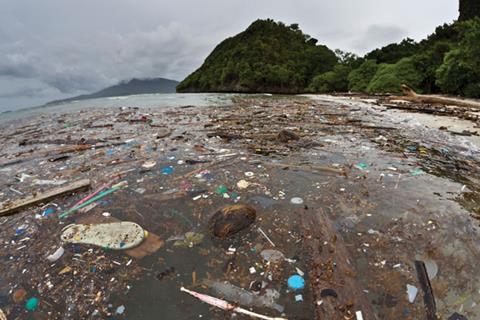
Work is also ongoing to understand how currents move floating microplastics from the coastline into the open ocean. The ocean’s circulation means that floating microplastics travel globally, slowly accumulating in five different regions, the so-called garbage patches. Depending on where the plastic entered the sea, transport to these sites will take anywhere from two to 20 years, says van Sebille. The term garbage patch implies that there are islands of trash floating over the ocean. ‘There’s nothing like that. It’s all broken down into tiny plastics and the concentration of plastic in these regions is not actually that high.’ In the North Pacific Ocean, the site with the highest measured concentrations so far, there is about one piece of microplastic per square metre. ‘It’s very likely that a lot of the coastal regions have higher concentrations of plastic than the open ocean.’
From an environmental perspective, sinking isn’t a better fate for microplastics than remaining floating on the sea surface – although it is sometimes portrayed that way, explains Heather Leslie, an environmental scientist at VU University of Amsterdam in the Netherlands. Leslie led the just-completed CleanSea project, an EU-funded consortium looking at all aspects of marine litter. She describes microplastics sinking to the seabed as ‘a preservation step’ due to the lower temperatures and lack of oxygen and UV light there.
In theory it is the density of the polymer that determines whether it will sink or not – those composed of polyethylene, polypropylene and expanded polystyrene should float, while those containing polyvinylchloride, nylon and PET should sink. But in reality it’s not that simple. ‘A plastic is a cocktail and there are lots of things in there other than the polymer that will affect the density,’ Leslie says. And even microplastics that are buoyant enough to float might eventually sink, owing to the biofilms that naturally form on their surfaces making them heavier. ‘Some things will even go up and down.’
Surface problems
It is not just microorganisms that like to hang out on the surface of microplastics; hydrophobic organic pollutants do too. And this could be more concerning. ‘Microplastics behave like little chemical sponges and all of these very toxic, persistent substances that are in the water will stick to the outside of the plastic in order to move from the aqueous environment to a more hydrophobic environment,’ explains Sherri Mason, an environmental chemist at the State University of New York, US. ‘They will accumulate to levels up to a million times greater than what is in the surrounding water.’ Mason’s focus is on the Great Lakes, which are notoriously polluted – thanks largely to dumping during the industrial revolution.
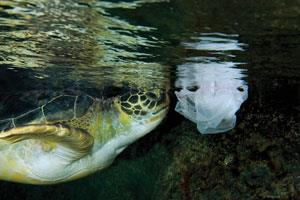
‘These little plastic particles act as vectors to move chemicals from the environment into the organisms that ingest them,’ she says. These pollutants are not the only chemical concerns with microplastics – they also contain chemical additives such as plasticisers, colorants and UV stabilisers. Marine organisms eat microplastics because they look like their natural food sources such as algae. Once ingested, the chemicals can desorb (or leach out) and move into the organism to be stored in the fat.
‘There are still more questions than we have answers,’ says Richard Thompson, a marine biologist from Plymouth University, UK, who has been studying marine microplastics for over two decades. ‘I don’t think it is in question that microplastics can transfer chemicals to organisms that ingest them, but what is not clear is how that pathway compares with other sources.’
‘The chemicals that we are discussing are already in the environment from a range of other sources,’ Thompson says. ‘So the key thing to establish is what, if any, is the additional contribution that plastic makes to transfer of chemicals to the food chain.’ The chemicals are, for example, already getting into organisms from the plankton they eat or through the water passing over their gills when they respire.
And it is not just the chemicals on or in microplastics that are potentially harming marine organisms. We are all familiar with the sorry stories of turtles and dolphins eating plastic bags believing they are jellyfish, but tiny pieces of plastic and are also doing physical harm once inside marine organisms. ‘We know from laboratory studies that relatively small quantities of plastic can affect the ability of marine organisms to store energy,’ says Thompson. ‘For example, as little as 1% plastic in a marine sediment can have consequences to the ability of a sediment dwelling marine worm to assimilate food.’
What about humans? No research has been done yet on the effects of marine microplastics on human health, explains Leslie. ‘There is no research funding available for that.’ As we eat seafood, there is potential for exposure, with filter feeders such as mussels and oysters thought to be the most likely route of human exposure. Water treatment plants are believed to have small enough filters to remove microplastics from water before we drink it, but a 2014 analysis of 24 German beer brands found microplastics in every single bottle. The research team proposed a number of potential sources, one of which was the drinking water used to make the beer. Meanwhile, a 2015 Chinese study found that 15 brands of sea, lake and rock salt were contaminated with microplastics.
Getting down to business

Although many questions remain about the amount, fate and impact of microplastics, the scientific community believe there is sufficient evidence to demand extensive efforts to stop their flow into our seas and waterways.
‘Even with the help of a magic wand to stop the input of large plastic debris to the ocean tomorrow, we would still see an increase over the next few years in the amount of microplastics because of the fragmentation of legacy items that are already present in the ocean,’ says Thompson.
In the absence of a magic wand, some people’s attention has turned to cleaning up. Coastal clean-ups already take place all over the world, but one group has decided to tackle the so-called garbage patches. The Ocean Cleanup is a crowd-funded project based in Delft, the Netherlands. ‘They want to engineer giant floating booms anchored to the seafloor and put them out in the great Pacific garbage patch, roughly halfway between Hawaii and the US,’ explains van Sebille. ‘Because the ocean is always flowing, the booms will have a lot of water passing through them and they will filter out the plastics.’
There have been as many questions and concerns thrown at this project as there has been public money. The top issues are cost-effectiveness, the ability to design an effective boom and whether the concept complies with the international law of the sea. For van Sebille, the biggest question is whether the choice of positioning is correct. ‘Would it be more efficient if you put them closer to coastlines?’ His models suggest it would, as the proportion of plastic is higher in these regions. ‘Also most marine animals – seabirds, turtles – are affected much closer to coastlines. By the time the plastic ends up in the garbage patches it’s done most of the harm already.’ His models have shown that placing the booms off the coast of China and Indonesia would have the biggest impact.
Thompson, however, has concerns that the buzz around ocean clean-ups may be distracting from better approaches to reducing the amount of microplastics entering the ocean in the first place. ‘Clean-up is like trying to mop up the bathroom floor while the bath taps are turned on full, the sink taps are turned on full and both are overflowing. It’s really important that we tackle this problem at source and we turn off those taps. Clean-up is not going to solve the problem. Now once the taps are turned off, then I think the relative importance of clean-up should be increased,’ he says. ‘As far as investing money in the problem, I think I would want to spend 95% of it in trying to turn the tap off at the moment and 5% on clean-up.’
It’s not clear why we need cosmetics that are full of pieces of plastic
Most people, including Thompson, view societal changes driven by policy as vital, and baby steps towards more informed policy are starting to be taken. In October 2015, England joined a handful of countries with a compulsory charge for single-use plastic bags. In December, the major supermarket chain Tesco reportedly said that the number of plastic bags taken home by their shoppers had dropped 78% compared to the month before the charge was introduced. Similar slashes in numbers were reported by Scottish shops when the fee was introduced a year earlier.
In December 2015, it was announced that microbeads will be banned in wash-off cosmetics such as face and body wash and toothpaste across the US (some states already have local bans). These tiny – again less than 5mm diameter – plastic beads flow through sewage treatment plants where filters are too coarse to catch them and out into rivers, lakes and seas. Some products have been found to contain millions of microbeads per packet and it has been reported that an exfoliating body wash can contain roughly as much microplastics as is used to make its plastic packaging.
Once the ban comes into full force in 2019, it should have a notable impact on overall microplastic numbers, although the exact size of its impact is unknown. Mason estimates that microbeads represent about 15% of the microplastics she has scooped off the surface of the Great Lakes. There is no similar ban imminent in the EU, although political discussions on the topic have been reported. And in October 2015, Cosmetics Europe – an industry body that represents over 4000 companies in the cosmetics and personal care industry – recommended that all members phase out microbead use by 2020.
Thompson views microbeads as a very avoidable source of plastic pollution in the sea. ‘It’s not clear why we need to have cosmetics that are full of thousands if not millions of the small pieces of plastic. It seems to me that they are something that has potential for easy policy regulation.’
Recycling and rethinking
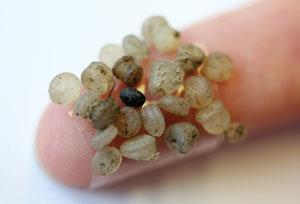
The answer to stopping the flow of larger plastic items into the sea lies in dealing with end-of-life plastics better, and key to solving that conundrum is product designs to make plastic items more recyclable. ‘We need to design plastic products so that at the end of the line, they have value,’ says Thompson.
About 40% of the plastic made each year is used in single-use items such as packaging. ‘We design plastic items to fulfil their role in service and for marketing purposes, and we haven’t historically thought about end-of-life clearly at the design stage. We need to design products, particularly these short-lived packaging applications, so that it is as easy as possible, and as efficient as possible, to recover the value at the end of their lifetime via recycling.’ Colourings in plastics, for example, can render recycling of otherwise recyclable items financially unviable.
Thompson recommends that appropriate policies and incentives are put in place to maximise the chances of items being recycled, as well as changes to labelling so consumers are made aware of what really will and won’t be recycled. ‘At the moment, we label products as recyclable. Now, recyclable is a theoretical construct. You could recycle most things if you wanted to but the question is: is it viable to do so?’
Improved product design could tackle other microplastic sources too, such as microfibres from synthetic clothes. These have been identified in seas and lakes. A study published by Thompson and colleagues in 2011 sampled wastewater from domestic washing machines and found that a single synthetic garment can emit more than 1900 fibres per wash. Suggested design changes include modifying the fabrics to make loose microfibres less likely and adding filters to washing machines to catch them before they enter the sewage system.
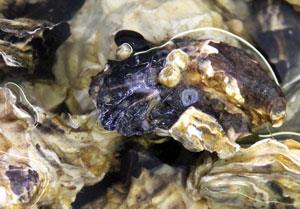
At this point, you might be thinking that biodegradable plastics are a good thing. But you’d be largely wrong. The labelling of plastics as ‘biodegradable’ doesn’t really relate to the natural environment. For items to get this label they just need to biodegrade under controlled conditions such as a commercial composter, and it says little about their ability to degrade in the natural environment. Another major issue is they contaminate the recycling stream – companies using recycled plastics to make products don’t want weaker plastics mixed in there. ‘I think you should keep thinking about biodegradables for things that are obviously not going to be recycled,’ says Leslie.
Maybe the biggest hurdle of all is persuading people to live in a more circular economy. ‘We need to reverse almost 60 years of throwaway living,’ says Thompson. But he thinks it can be done: ‘It’s a different societal problem to carbon emissions. We can have a win–win with plastic meaning we can have the benefit without the need for emission, because the benefit to society and the emission are decoupled.’
Nina Notman is a science writer based in Salisbury, UK
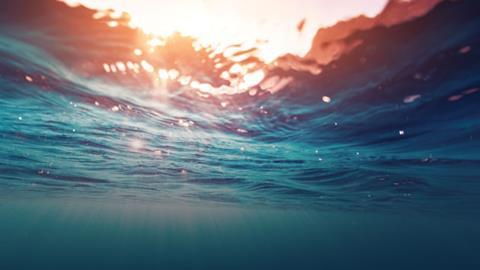

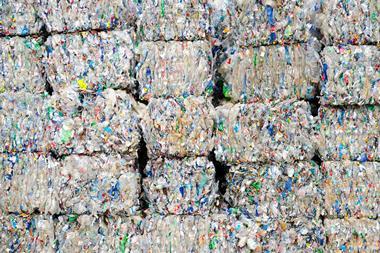

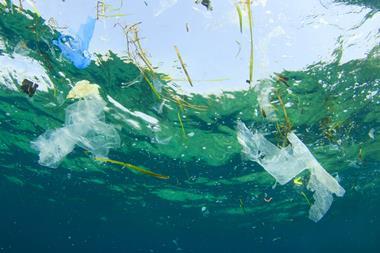
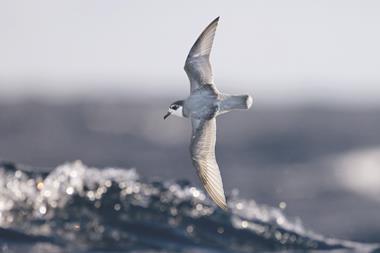







No comments yet